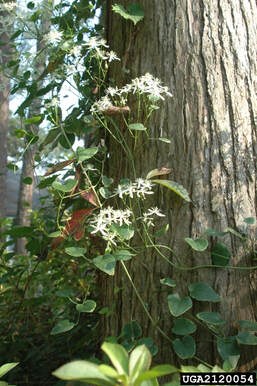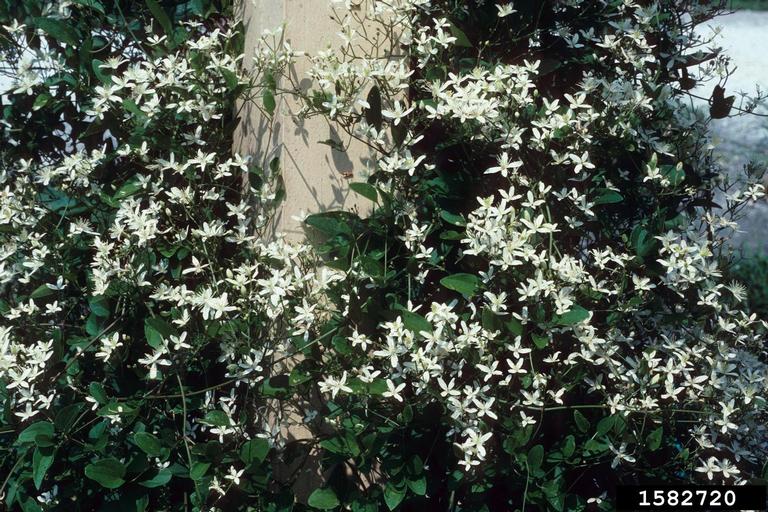Sweet Autumn Virgin's Bower
Clematis terniflora
|
Sweet autumn virgin’s bower (Clematis terniflora), also known as sweet autumn clematis, is a vigorous woody vine that has fragrant flowers which bloom in the fall. Native to Japan, sweet autumn virgin’s bower was introduced to the United States in the late 1800s as an ornamental plant and has since spread in parts of the Southeast and Midwest. This vine prefers sunny to partially shady habitat and is found invading forest edges, rights-of-way, and urban green spaces, especially near creeks.
Sweet autumn virgin’s bower is a climbing, semi-evergreen vine with opposite compound leaves, each leaf composed of 3-5 glossy green leaflets, usually untoothed on mature plants. Blooming in the late summer or early fall, the flowers are 4-petalled, pubescent, white, star-shaped, and are only about an inch across, with numerous white anthers protruding. The blooming of sweet autumns virgin’s bower is a spectacle, with flowers nearly covering the entire foliage. Seed heads have long silvery-gray feather-like hairs attached. While the seeds are large and not highly mobile, sweet autumn virgin’s bower produces prolific seed and is a rapidly growing species, usually up to 30 feet, overwhelming forest understories. In North Carolina, it has been observed in the Mountains, Piedmont, and Coastal Plain. Fact Sheet: Sweet Autumn Virgin's Bower
|


